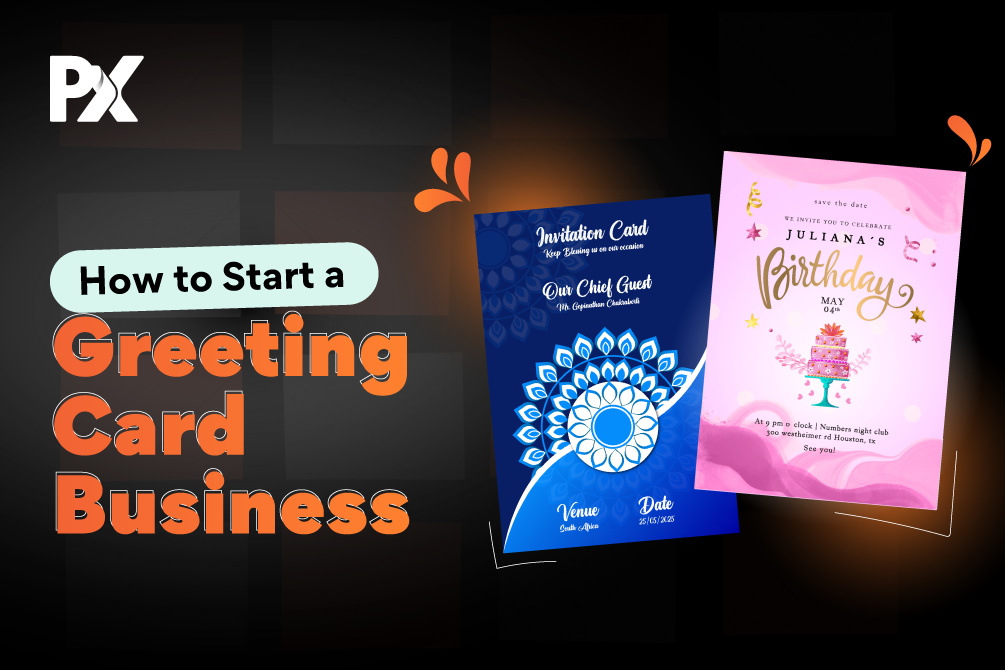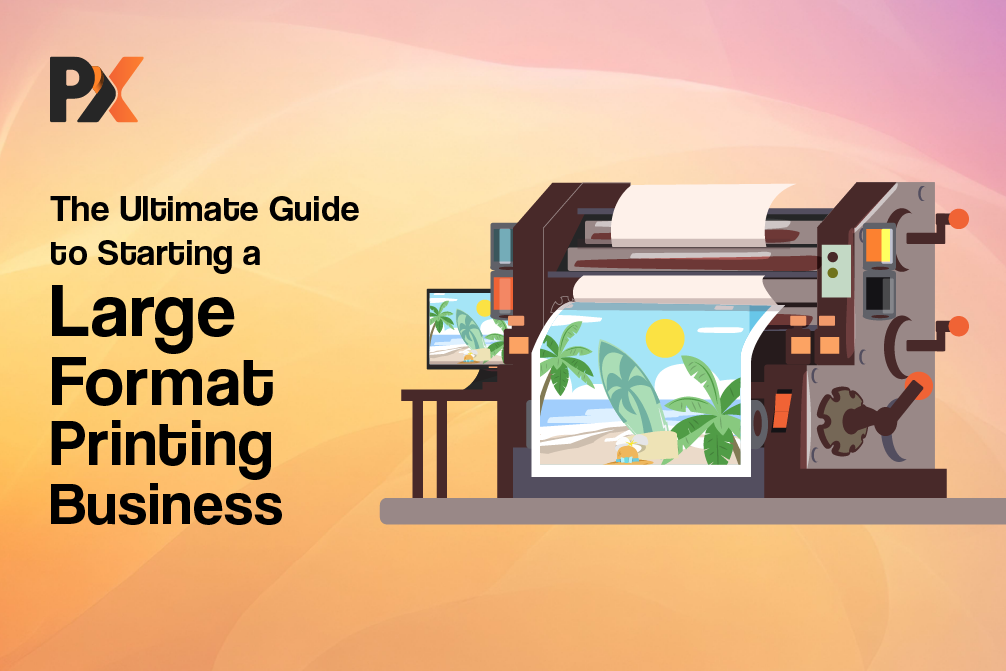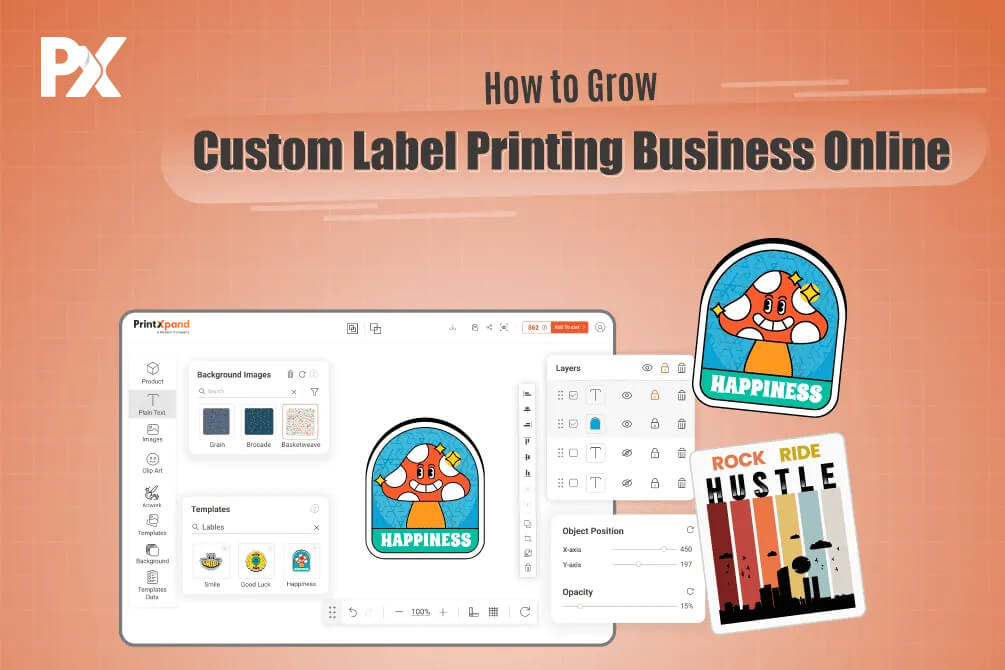- Summary
- Decide your Target Audience
- Which One Should You Choose: Readymade Cards or Personalized Cards?
- What will the Greeting Card Industry look like in the future?
- Step 1: Visibility through Your Website and Ecommerce Store
- Step 2: Design Phase: Adapt a Product Design Tool
- Step 3: The Printing Phase
- Step 4: Define Marketing Strategies
- Cost vs. Benefit: Maximize the Profit
- Step 5: Delivery and Logistics Management
- Start a greeting card business: Work with experts
Summary
It’s your birthday, and amidst the hundreds of wishes you receive through WhatsApp, Instagram stories, and DMs, one wish catches your heart.
It’s a personalized card from your mother featuring a special moment and a heartfelt message.
Cards surely have a unique power to connect us emotionally.
Even in this digital age, they remain a popular choice. North America is the fastest-growing market, with revenues expected to reach $8.17 billion by 2030.
Around 7 billion greeting cards in the US are purchased annually, making it a thriving $7.5 billion industry.
So, if you want to start your greeting card business, this is the must-read blog for you. Compiled here is a detailed guide that will answer all your questions from “How to start a Greeting Card Business?” to “How to frame the perfect greeting card business plan?”.
Create a full-proof, well-planned, legally compliant, customer-friendly greeting card business plan. Let’s start.
Decide your Target Audience
Deciding the target audience or the target market is the essential step zero. You cannot probably sell without knowing who you’re trying to sell to. Decide what audience you want to target. Deciding this early is essential so you can create designs that appeal to those audiences. You must go through a series of steps to decide your target audience. Let’s look at them one by one.
1. Find your Niche
You need to think of a strategy that will mark your identity and differentiate you from the pool of competitors. Defining a unique niche is part of your larger brand strategy. Your business’s niche will depend on many things, like the name, specialization, marketing strategies, and so on.
If you focus on a specific type of message, changing to something new might be hard. Your business name may or may not fit your new direction. So, it is better to know it all before you begin.
2. Greeting Card Type
Decide what kind of cards you are going to design. Categorization could be based on size, material and so on. Ask yourself all sorts of questions and brainstorm. All these questions will help you decide your inventory and supplies and will eventually help you estimate the cost of your plan.
- Size Decide the size of your cards. What size are you going to offer? Will you offer multiple fixed-size options? Will you offer custom sizes?
- Material Choose the material that you’re going to offer. There can be many materials to choose from like paper, cardboard, reusable material, etc.
Top Greeting Card Companies: Learning Popular Card Types, and Trends from Them
Below are the 4 popular greeting card companies and what they are good at.
1. LovePop Cards
LovePop is more than just a greeting card that unfolds like a miniature surprise. The company creates 3D paper sculptures for every occasion designed by naval engineers on cutting-edge software and then hand-crafted in the Asian art form.
3D elements have been a popular choice on greeting cards. Embracing such latest technologies will make you stand apart.
2. One-per-Week
It is a monthly subscription that sells high-quality cards. Each box comes with 4-5 greeting cards plus color pens, vintage stamps, and more. Cards are centered around themes like birds, food, and puns.
This type of business model is growing at an exceptional rate. The subscription-based business model is an excellent option for giving your business the sustainability it requires.
3. Plantables
The foundation of Plantables is sustainability. Plantable seed paper is used to create their eco-friendly greeting cards, guaranteeing that each heartfelt message has a long-lasting effect on the environment. These cards are made from biodegradable, wood-free materials and printed using water-soluble dyes. When planted, they become gorgeous wildflowers, herbs, or veggies.
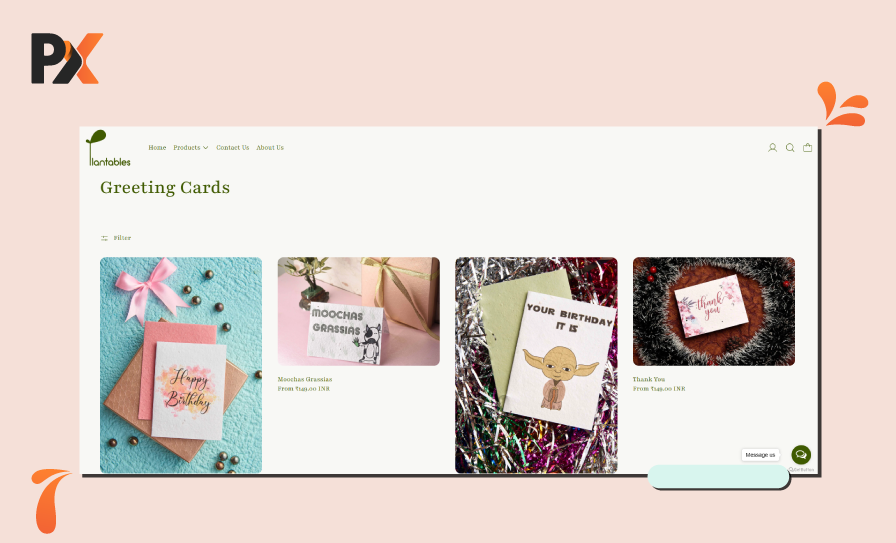
Companies like Plantables are setting the standard for sustainable giving as more consumers prioritize environmentally friendly options. Each card develops into something meaningful rather than ending up in a landfill, adding even more specialness to the festivities.
4. CardsDirect
CardsDirect is a Texas-based company selling cards for all occasions. What sets them apart from others is their card designer tool. Using the tool, shoppers can customize their cards by adding logos, images, signatures, etc.
This allows them to provide an extensive range of cards for every occasion, as their customers can customize the cards and add any message they wish.
You too can provide a diverse selection of greeting cards by implementing a Product Designer Tool.
This powerful tool lets your customers add their personal touch online, designing cards for any occasion and expressing themselves through unique elements and text.
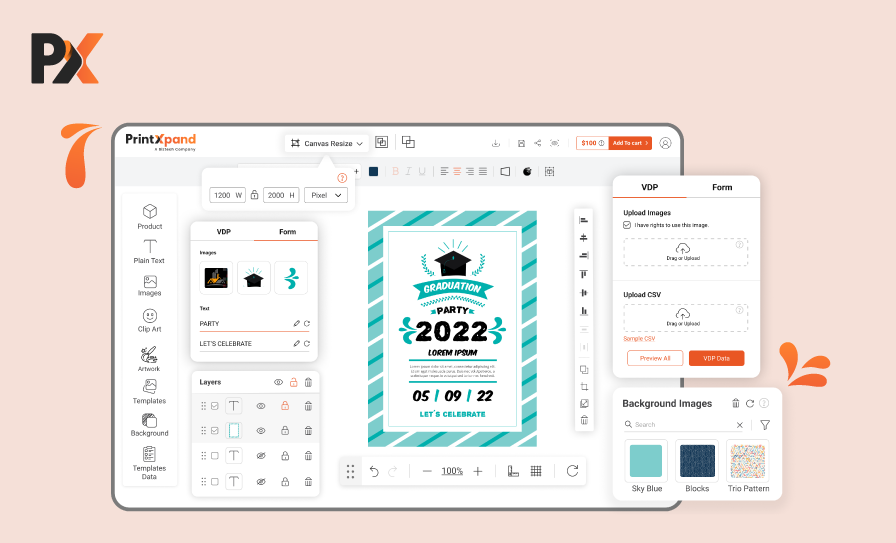
Want to learn more? Discover the distinct functionalities of our intuitive tool by clicking the link below.
Which One Should You Choose: Readymade Cards or Personalized Cards?
When starting to sell greeting cards online, you might find yourself wondering weather to Either offer readymade cards or personalized cards or offer both of them?. Although custom-made cards produce more guaranteed money. You may lose some creative control, as you must produce what the client wants. Therefore, offering both types of cards can be a plus point too. You can also showcase your creativity through readymade cards. By offering personalization, you can let your customers design the cards as they want.
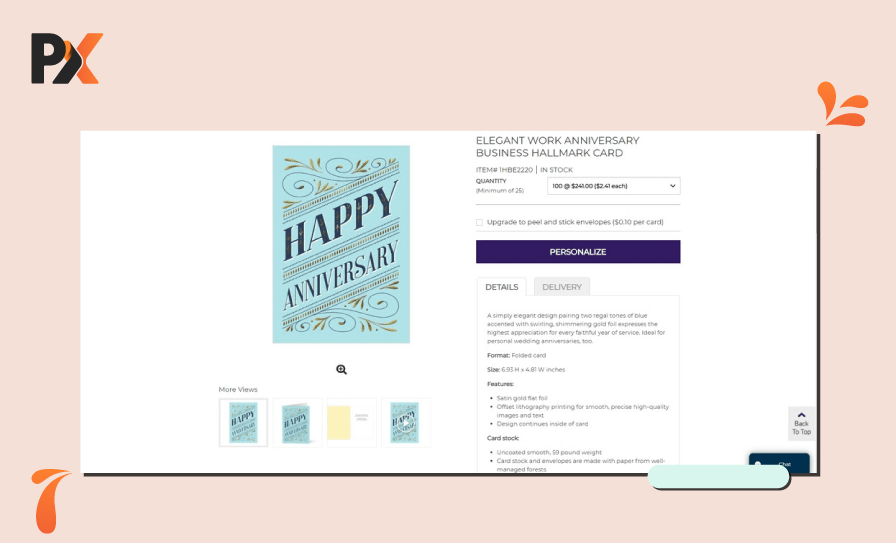
(Personalized Greeting Card)
Personalized Cards: A Major Growth Driver for Your Startup
You must be wondering why there is a big difference between personalized cards and readymade ones. Well, the answer is simple. Customers love things made specially just for them. A great way to make customers happier and keep them engaged.
When you have the best greeting personalization card integrated with your storefront, your customers can upload photos, write messages, and add designs of their choice. The tool also sends ready files for printing, making your job easier! Furthermore, customers experience value through exclusivity in the form of customized products. It gives them the feeling of something unique and specific that works just the way they want.
So, when looking for a product design tool for your business, make sure that you opt for one that is built by industry experts. It should be fully functional and easily integrable with all eCommerce platforms.
What will the Greeting Card Industry look like in the future?
In one simple word, the industry’s future looks “bright.” However, to be a business that breaks the market, you also need to keep track of the new greeting card business by reviewing submission guidelines and requirement statistics, by visiting card stores, fairs, etc. It is a good way to find out what is trending, what is not, and what sorts of cards people are looking for.
These stats can also help define your niche. Let’s examine some of the industry’s latest trends. You can also get a good idea of the conventional market, which could help you break the conventions and offer something unique.
Customized greeting cards are becoming more common. This trend is bolstered by the companies’ emergence, allowing their customers to create cards as and when they want quickly.
Millennials and younger consumers seek cards with relatable content containing cheeky or informal messages. These cards cater to the need for a more comedic, informal communication method. Many smaller businesses are creating these cards, and industry experts expect they will continue growing.
Social media seems to be the number one choice for card companies for branding, promoting their products, and creating a loyal fan base. Brands like Hallmark are doing a great job on social media. If you were to check their Instagram profile, they hardly post promotional content. Yet they get so much traction plus conversions? Well, the magic is in the type of content they post. They have gathered a massive following of more than 281K by sharing inspirational messages, behind-the-scenes videos, tips, giveaways, and more.
Also Read: A Step-by-Step Guide on Selling Invitations Online
So, you’re ready with your step Zero and you’ve thought it all through. You know your niche, type of cards, type of products, and so on. Here is a 5-step implementation plan, to start with the successful execution of your business idea.
Step 1: Visibility through Your Website and Ecommerce Store
The first and foremost step in your greeting card business plan is to build your online presence and improve your visibility.
You can also go with a traditional offline store; you and I both know that the world is going digital.
The market for e-commerce is predicted to grow to over $7.9 trillion by 2027! So, having an eCommerce store is definitely a better option.
You will need an eCommerce store to sell your products and showcase your offerings. You can easily build your online presence if you go through the following steps.
i) Website
You will need to register a domain name and build a website. You can create your website and customize it to mark a benchmark of your brand. You can build an eCommerce website directly or separately and then integrate your eCommerce store into it
ii) E-commerce Platform
Selecting the right e-commerce platform is a crucial step. There’s a pool of options to choose from. We are looking for a specific use case that is building it for our greeting card print shop or website. You can categorize your selection based on licensing, development cost, customization, support services, etc.
Magento, Shopify, and WooCommerce are three popular eCommerce platforms with active communities for developers and support. Magento is a popular choice for larger enterprises and those needing flexible customization. Shopify and WooCommerce are hassle-free to start with. You can easily integrate the store into your website and get up and running within days. Each platform has its own pros and cons. To learn more about these platforms, you can visit this detailed guide.
iii) Business App
Now, implying the best greeting card business strategies is also essential! For that, the most impactful you can do is create and launch your own app. Having your own app can also work towards building brand recognition.
At PrintXpand, we provide comprehensive solutions to help you effortlessly start your own greeting card business.
We offer personalized eCommerce platforms tailored to your specific business requirements.
Additionally, we can assist you in developing a native Mobile2Print application for wider customer engagement. Our experts will guide you through the setup process, ensuring a smooth and hassle-free experience.
iv) Social Media
You can build a social media page to publish your content and improve your reach. Most millennials and the young generation are active on social media these days, and with your unique product offering, you will surely get good business.
Step 2: Design Phase: Adapt a Product Design Tool
You’ve set up your website, app, e-commerce store, and social media account. Now, all you need to do is create eye-catching designs that lure customers to your store. The more unique your designs are, the more likely customers are to click on your website. As we noticed earlier, product personalization is trending these days. To let your customers implement this on their own, you will need a Product Customization tool.
A product personalization tool is a Web-to-Print software with diverse features for your customers to create customized designs. All you need to do after that is print those designs. An Intuitive W2P product design tool consists of everything that you would expect from an online product design tool, from diverse customization features to print-ready designs.
Ideally, most tools provide a huge library of images, texts, clipart and ready templates. A fully-responsive designer tool is also perfect for creating personalized designs on every printable material. It can have element-based pricing, design-based pricing and so on. Pick a tool that gives you full control over its offerings and flexibility.
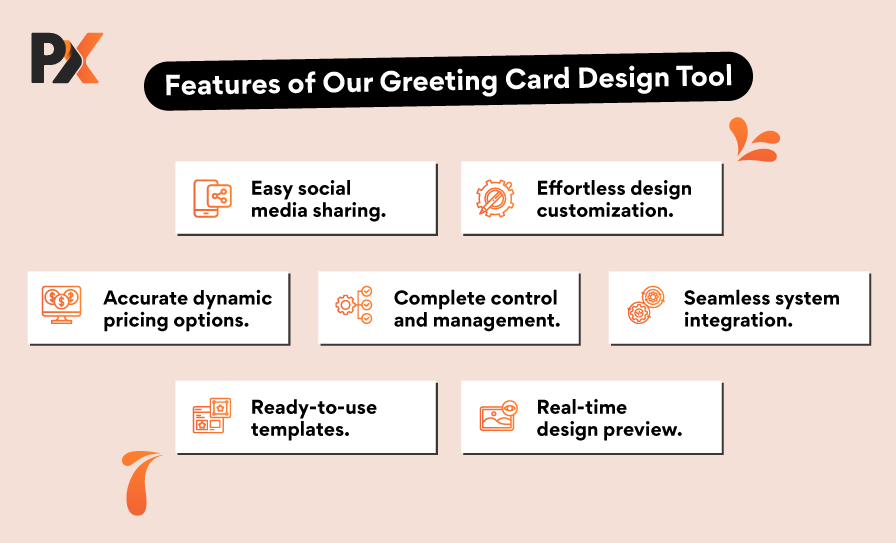
Step 3: The Printing Phase
After your customers design their products, the next step is to print those designs. Planning the printing phase involves planning everything from the printing methods and supplies to the printing infrastructure. Let’s have a detailed look at all these aspects.
A. Printing Methods
There are multiple types of printing methods. Choose your printing methods first to ensure the availability of your supplies and infrastructure. It is necessary to select a printing method that gives the desired result.
While choosing the printing method, consider factors like the quality of the output, required resolution, compatibility of the printing method with your product design tool, and so on.
Some popular printing methods are engraving, thermography, foil stamping, embossing, digital printing, etc.
Digital Printing is one of the most common methods. It uses four colors of ink to create intricate designs and lettering applied in small dots. Plus, digital painting requires an image resolution of 300 dpi, which ensures better image quality and output.
B. Manage your Supplies
Note down all the supplies you’ll need and look for similar suppliers. You will need necessary supplies like cards, paper, ink, etc. Find wholesale suppliers through industry contacts, trade journals, the internet, etc.
You can go according to your budget and choose the one that best suits your budget. But it will be best if you don’t opt for not going for low-quality products solely because of the budget. It is about customer satisfaction in the end. To manage these supplies, you can also get a Inventory management software.
C. Infrastructure
Set up the infrastructure pertaining to the printing method you choose. Build a professional workspace with the required instruments. The printing instruments that you buy will depend on the printing methods that you choose. You can hire professionals to help you with everything. You can sign a third-party contract and give the printing consignments to well-equipped print professionals.
Step 4: Define Marketing Strategies
Your customer probably won’t discover your charming cards without you marketing them. Your greeting card business plan needs effective marketing strategies. The best marketing technique for new businesses is word-of-mouth. You can devise a more formal approach to your marketing strategies as you grow. Marketing strategies must include social media marketing and email marketing. You can also create and launch ads and print your business reviews in local newspapers.
Promote yourself through various retail outlets. Showcase some sample designs on your eCommerce stores and social media. Social media advertising is a cheap way to get early business.
Choose the right kind of content to catch the attention of your potential customers. Offer samples and prototypes to customers so they can see the card up close before committing to larger orders. You can also sell these cards directly to pre-existing popular stores. This can build brand recognition, too. Providing additional sweeteners, such as free shipping or discount can also prove to be helpful. The possibilities are limitless.

You can also apply these five best greeting card business strategies to reach more customers and get more conversions.
1. Niche Facebook Group Engagement (NOT Ads)
Instead of running expensive ads, actively engage in niche Facebook groups where your ideal customers hang out the most. For example, wedding planning groups, new moms, pet lovers, and long-distance relationship groups. Sharing non-promotional content in these groups will help you reach more audience organically!
2. Collaborate with Local Shops and Florists
Such no cost partnerships with local florists, gift shops, or bakeries can bring you amazing results. Ask the shops to feature your greeting cards in-store or as an add-on to their sales. Furthermore, you will be able to easily tap into the ready-to-buy customers!
3. Personalized Direct Outreach on Social Media
This marketing strategy, too, doesn’t need you to have deep pockets. Instead of waiting for customers to come to you, actively reach out to people who might love your greeting cards. How will this help you? For one, people love personalized outreach rather than seeing generic ads. Moreover, it will help you build genuine connections with your potential customers!
Cost vs. Benefit: Maximize the Profit
Every business owner, as a beginner, is worried about the cost vs. benefit ratio. But they forget that the benefit ratio is not solely based on the market but also on their own business strategies. Here’s a brief on how to increase the benefit ratio using smart business tactics. Include these points in your greeting card business plan, and you’re good to go.
Most card shops—online and offline—sell specialized envelopes, pens, gifting accessories, and so on. You can implement this, too. Provide gifting options at the time of checkout. Ask your customers if they want envelopes and suggest some based on the type of card they’ve chosen. This will bring you additional revenue.
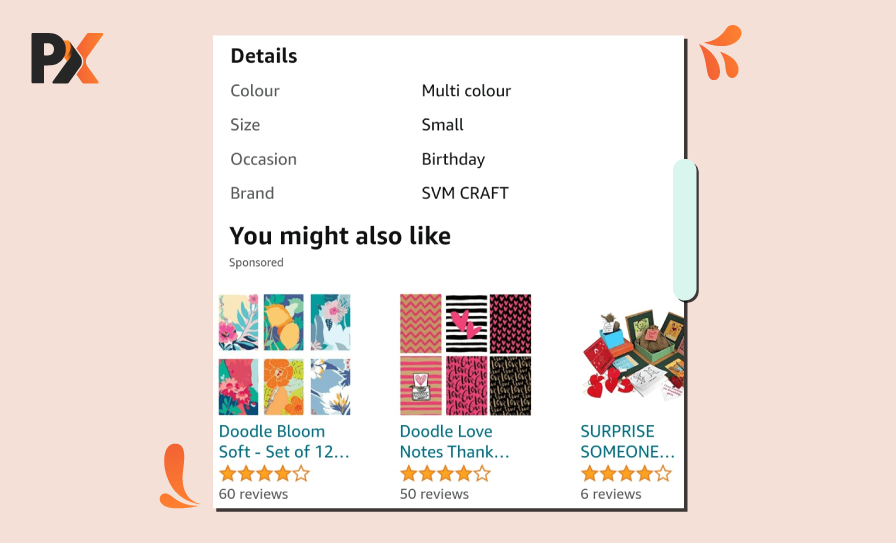
(Product Recommendations to Drive Higher Conversions and Increase Average Order Value)
You can sell these cards in bulk at various retail shops, too. This can help improve your brand recognition. Design unique and new ideas to get more attention.
Decide on a pricing system of your own. Especially for personalized products, you can include element-based pricing, size-based pricing, color-based pricing, etc. You can charge your customers for uploading custom photos too. You can charge them for every word they write, or implement sentence-based pricing.
With our card designer tool, you can also display live pricing based on the level of customization your users are opting for. This will make pricing more transparent, leading to a positive impact on customer experience.
Plan seasonal offers and provide lucrative discounts to your customers. Generally, greeting cards cost about $2.50 each. However, you can sell a pack of six cards for approximately $7.50. This way, customers will find it cost-effective and are more likely to make the purchase.
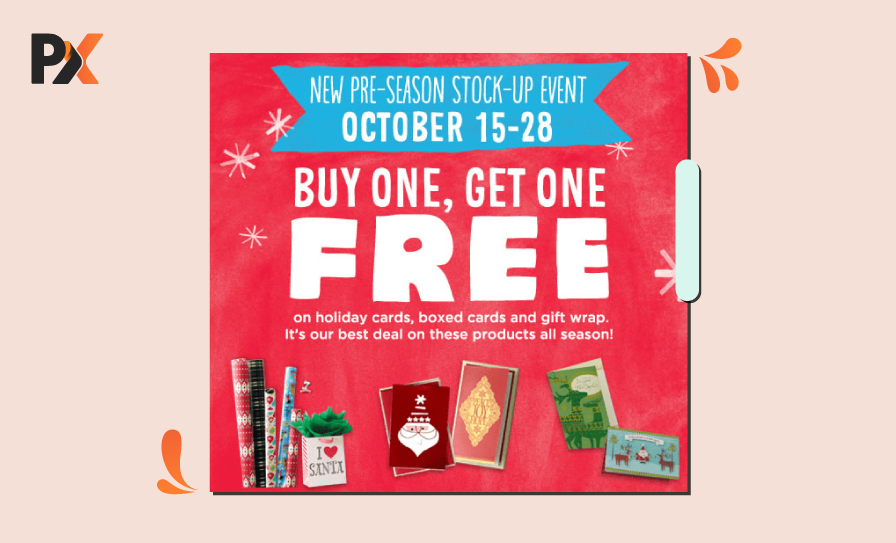
(A Well Executed Discount/Offer Strategy Will Bring You a Bunch Of New Customers)
The global greeting card market is forecast to be worth $6530.4 million by 2028, leaving plenty of room for independent sellers to enter the industry.
Your designs matter; just make sure they are high-quality. You can also collaborate with print specialists who offer more than simple printing services.
The old saying goes: It takes money to make money. But nobody said that you have to spend all of your own money. small business funding can help you cover the expenses required to get your greeting card business plan started. You can use this funding to help you with equipment, supplies, employees, legal fees, etc. There is no one-size-fits-all type of business funding. So, consider your options mindfully.
Step 5: Delivery and Logistics Management
Last but not least is logistics management. You will need an effective logistics infrastructure to manage your supply chain as smoothly as possible. Again, you can create logistics workflows or outsource them to a third-party company. Decide on a commission to pay them either monthly or based on orders.
Start a greeting card business: Work with experts
Hopefully, this handy guide will help you create a clear plan for starting a greeting card business. Without a roadmap, things can get chaotic. There are hundreds of things to manage. But now you have the perfect plan and tools to frame the perfect business strategies for your greeting card business. However, the main decision to take is the choice of the eCommerce platform and a custom design tool.
PrintXpand is a foolproof solution to the dilemma of making the right choice for a custom design tool. Our Web-to-print developers can help get you up and running within just a few days. We design web-to-print solutions for multiple platforms like Magento, WooCommerce, Shopify, Prestashop, OpenCart, PHP and so on. We also provide multiple custom integrations like Print Inventory Management solution and Print Job Manager.
Our product comes with the top functionalities that you need to acquire, engage, and serve your potential end-customers in the best way possible. We guarantee that our team of expert developers will guide you every step and be by your side to embark on this journey ahead. If you do seek any customizations for your greeting card business idea – we would not be surprised.
All product and company names are trademarks™, registered® or copyright© trademarks of their respective holders. Use of them does not imply any affiliation with or endorsement by them.
FAQs
Is starting a greeting card business profitable in 2025?
Yes! The global greeting card market is anticipated to reach US$22.95 billion by 2034 which directly indicates a steady growth for the business, making it a profitable opportunity, especially with personalized designs and online sales channels.
How do I start a greeting card business?
Start by selecting the niche you want to cater to, then begin creating unique designs, and later set up your online store. Leverage eCommerce platforms and advanced product design tools to offer customization and print-on-demand services. Additionally, market your products through social media and other collaborations.
How much does it cost to start a greeting card business in 2025?
Startup costs vary based on scale. A small home-based business might require $500 to $2,000, covering design software, initial inventory, and marketing. Larger operations could need $5,000 or more for advanced equipment and broader marketing efforts.
Which type of greeting cards are the best to sell?
Birthday cards are the most popular and account for more than 50% of all greeting cards sold. Additionally, personalized and eco-friendly cards are also in huge demand right now.
How can PrintXpand help in setting up a greeting card business?
PrintXpand offers an AI-powered greeting card personalization tool with the entire web-to-print solution, tailored for your needs so you can easily create and sell personalized greeting cards. Moreover, with this solution. you don’t need any large upfront investments.
